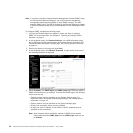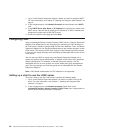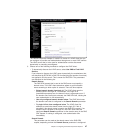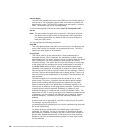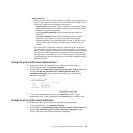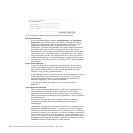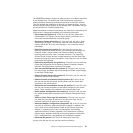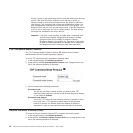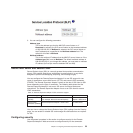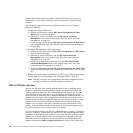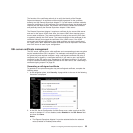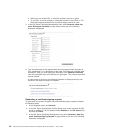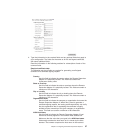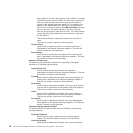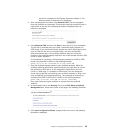
Priority is given to login permissions that are retrieved directly from the user
record. If the login permission attribute is not in the user’s record, an
attempt is made to retrieve the permissions from the groups to which the
user belongs. This is done as part of the group authentication phase. The
user is assigned the inclusive OR of all the bits for all of the groups. The
Read Only bit is set only if all the other bits are zero. If the Deny Always bit
is set for any of the groups, the user is refused access. The Deny Always
bit always has precedence over every other bit.
Important:
If you give a user the ability to modify basic, networking, and
security-related adapter configuration parameters, consider
giving this same user the ability to restart the Remote
Supervisor Adapter II (bit position 10). Otherwise, a user might
be able to change parameters (for example, the IP address of
the adapter) but will not be able to make them take effect.
TCP Command Mode Protocol
The TCP Command Mode Protocol is used by IBM Director for out-of-band
communication with the Remote Supervisor Adapter II.
To set up TCP command mode, complete the following steps:
1. In the navigation pane, click Network protocols.
2. Scroll down to the TCP Command Mode Protocol area. A page similar to the
one in the following illustration is displayed.
3. You can configure the following parameters:
Command mode
You can use this field to specify whether you want to allow TCP
command mode sessions to connect to the Remote Supervisor Adapter
II. The default is Enabled.
Command mode timeout
This is the TCP command mode inactivity timeout, in seconds. If there
is no traffic from a TCP command mode session for the specified
number of seconds, the Remote Supervisor Adapter II closes the
connection. A value of 0 (the default) means that there is no timeout.
Service Location Protocol (SLP)
To set up the Service Location Protocol (SLP), complete the following steps:
1. In the navigation pane, click Network protocols.
2. Scroll down to the Service Location Protocol (SLP) area. A page similar to the
one in the following illustration is displayed.
52 Remote Supervisor Adapter II SlimLine and Remote Supervisor Adapter II: User’s Guide



